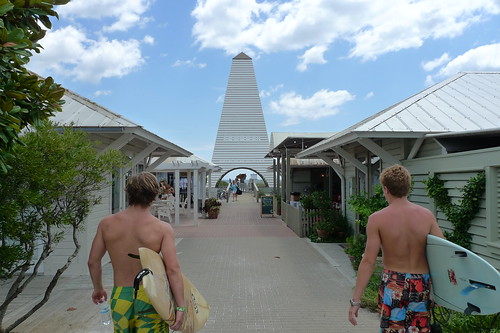
I didn’t expect to be surprised by Seaside. It was one of those places I’d read a great deal about: as ground zero for the New Urbanist movement, the Florida town’s merits have been hotly debated for nearly thirty years. It’s also one of the most visually familiar planned towns of the twentieth century, as a result both of widespread photographic coverage and its front-and-centre role in the film The Truman Show. From that remote reconnoitring I figured that I already knew its good points and bad points: it would be beautiful, quaint and impeccably planned; but at the same time artificial, overly controlled, and perhaps a little creepy. I was surprised, then, at just how profoundly impressed I was by it.
I think my preconceptions about Seaside reflect a certain blasé attitude towards New Urbanism in the planning profession as a whole. Perhaps planners (and architects, and developers) feel that they have cherry-picked the best ideas from New Urbanism and don’t need to give the movement much more thought: yep, got it, walkable communities, mix of uses, classic design principles… got it, got it, got it. The whiff of unfashionable idealism and nostalgia associated with the movement doesn’t help, and nor does the fact that so many New Urbanist developments – including Seaside – have been occupied almost entirely by the wealthy and white. Seaside’s use in The Truman Show gives it a particularly strong association with these critiques, since the film’s story of a false paradise in a totally artificial environment was the ultimate pop-cultural expression of the anti-New Urbanist position. Yet to see Seaside is to realise the danger of judging New Urbanism only from afar or from its watered-down imitations.
